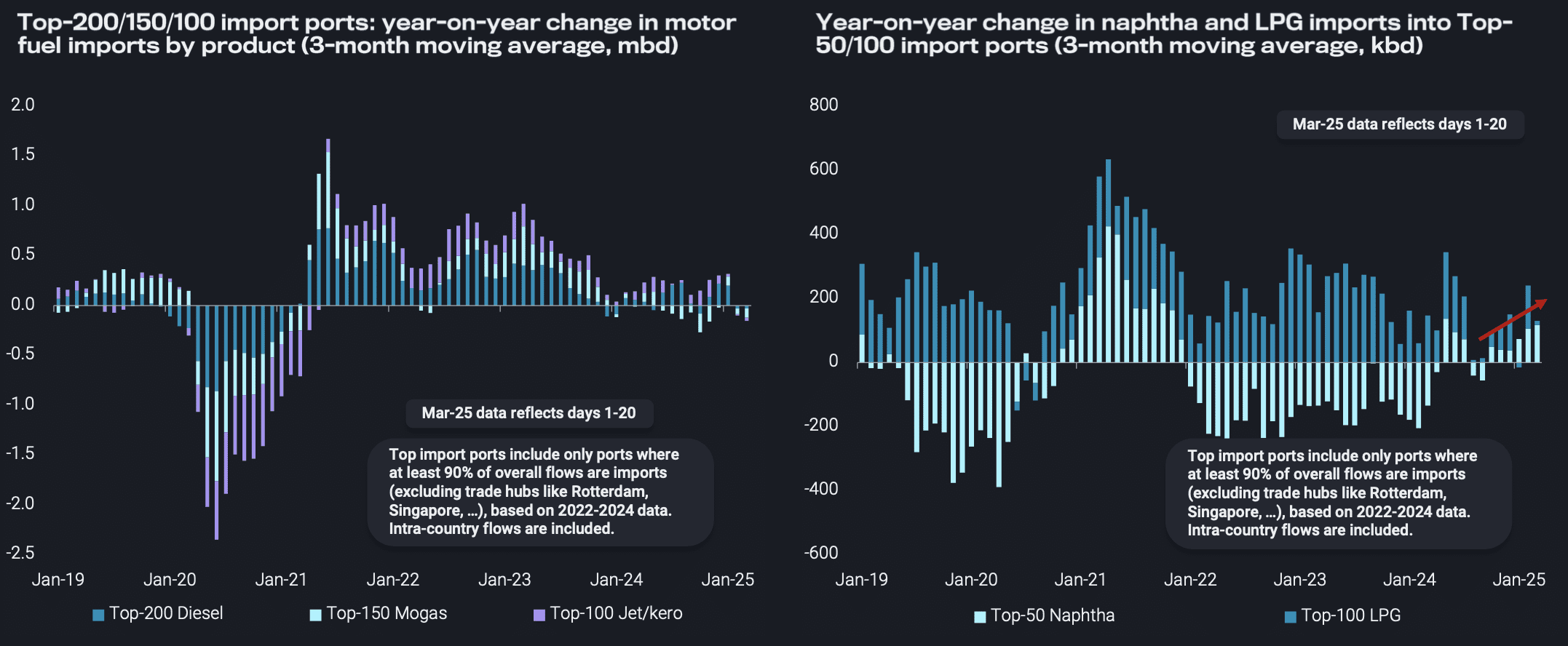Oil market outlook 2025
Explore the 2025 oil market outlook, amid demand stagnation, supply shifts, and geopolitical influences. Will OPEC+ maintain stability, or could oil prices defy expectations?
We have previously shared our take on whether global uncertainty implies market volatility, concluding that volatility has ultimately manifested in the freight markets, whereas oil prices have remained range-bound amid muted growth in global supply and demand for the past two years.
The oil products side has not signalled much hope for demand in early 2025. Vortexa data indicates motor fuel demand has come to a standstill since December, making spare global refining capacity an issue with shutdowns scheduled all over the globe. Only naphtha is doing a bit better, as LPG export availability from the US is hitting temporary capacity restrictions (right-hand side chart below).

LHS: Mogas 100 &101-150, Diesel 100 & 101-200, Jet 100. RHS: Top-50 naphtha, Top-100 LPG
Perhaps the most outstanding feature of oil markets early in 2025 is a huge rerouting of crude away from the Atlantic Basin to the Pacific Basin, driven by Asian buyers being concerned about future supplies from Iran and Russia. We have seen 1.7mbd less crude being directed to the Atlantic Basin in Q1 2025 than a year earlier. Instead, these barrels are targeting eastern markets with a notable swing of more than 500kbd of CPC Blend and North Sea grades towards Asia over February and March.
One of the most frequently asked questions is whether Iran can evade a maximum pressure policy from the US. This question will ultimately be decided in Beijing, and we tend to think that China is unwilling to let the US dictate its third-party trading relationships. We have noticed regular adjustments to logistical approaches, including more STS activity, but also the discharge by sanctioned tankers. Chinese policy makers may see the independent (also from global finances) teapot sector as a virtue rather than a vice in this context.
Much doubt has been uttered on how the above and general market workings are to be squared with the placed target of $50/b oil prices. We would also tend to argue that the US is pretty alone with such an objective, as oil producers (inside and outside OPEC+) surely want higher prices, and also consuming nations like China and the EU may not facilitate lower prices given their energy transition agendas, which work better with higher oil prices.
Of course, oil prices could go lower if OPEC+ brings barrels back, demand continues to disappoint, and more supply – especially in the Americas – comes onstream. But will all this really happen at the same time? OPEC+ has shown a very solid grip on market fundamentals, and we expect this approach to prevail. In spite of all this uncertainty, most players agree that the most likely outcome for oil prices is more of the same – somewhere around $65-75 per barrel on an average basis.